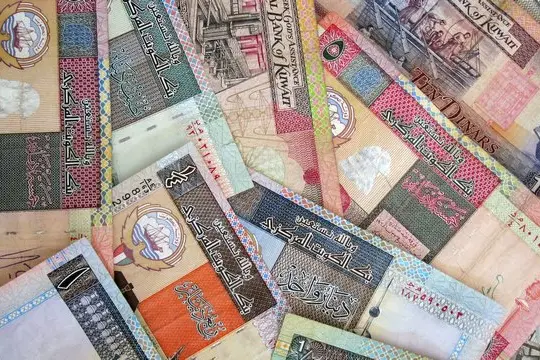
When it comes to proving your identity online, face ID – also known as face biometrics – is fast becoming one of the most reliable methods of authentication. Why? Because your unique facial features are the most reliable indicator of what makes you, you. When used in conjunction with ‘liveness’ technology, a process that proves that a person is real and using their face to log in at that moment in time, this technology offers powerful protection against potential fraudsters and cyber criminals. But what happens when our appearance changes with age, or we get a rhinoplasty or lip fillers? Could changes to our face make our own face ID tools lock us out?
Appearance changes and face recognition
The good news is that the natural process of aging doesn’t have a significant effect on face identification – to a point. In 2017, Michigan State University (apo-opa.co/3RxvGgK) investigated the extent that facial aging affects the performance of facial recognition systems. The study found that 99 percent of facial recognition images could still be recognised up to six years later. However, the face does change naturally over time, and the accuracy began to drop when images of a person were taken more than six years apart. This, of course, varies from person to person.
Murray Collyer, COO of iiDENTFii, an award-winning remote biometric identification platform, says: “Our technology asks users to take a selfie from a specific angle. This confirms that a real, live person is trying to log into the account and that a fraudster is not using a photo of your face to try log in. We confirm the person’s identity by cross-referencing it with existing official identity records, such as a person’s government-issued ID. This means that, even if your face changes as you age, you will still be successfully identified if your official ID documents are reasonably up to date.” As the research above explains, ‘reasonable’ is usually within the past six years.
However, when it comes to plastic surgery, there are some procedures that might confuse face ID tools. Procedures (apo-opa.co/45weldQ) that change the volume of tissue in the face, such as cheek implants, lip fillers or buccal fat reduction, may change your appearance enough for you to not be recognisable to your face ID on record. Tissue-lifting procedures such as eyelid surgery or a brow lift may also affect facial recognition.
As many algorithms process face recognition by mapping the central face, any procedures done to the central face are most likely to stymy the system. Cosmetic surgery that impacts the side view of the face, such as botox, neck lifts or lower facelifts are less likely to affect facial recognition systems.
Collyer adds, “It’s also important to remember that, when a person has plastic surgery to improve their appearance, they may look different to the human eye but not to a facial recognition tool. This is because the ratios for facial recognition are not the same ratios that the human eye aspires to when seeking out cosmetic procedures.”
In the case of iiDENTIFii, customer's facial data transforms into a biometric hash, an encrypted set of ones and zeros stored securely in a biometric vault. This encrypted data, also referred to as a "reference template”, serves as the benchmark for verifying the returning user's face against the initial onboarding image.
“This process only occurs once, at the time of your first enrolment. After that our process, if required, will adapt as you age. The ‘Genesis Selfie’ can be done as often as you like - for example, on Day 1, your selfie is compared to an 8 year old ID image, while on Day 3, it is compared to a 3-day old selfie. Your selfie can be updated each time you do it to be the most accurate. In that way, our system ages with you.”
What else can affect face recognition?
Face mapping is a sensitive process, which is why platforms such as iiDENTIFii request a series of static selfies. A face cannot be mapped accurately when the person is moving. However, even if a person takes a selfie in a dimly-lit room, or on a poor-quality digital camera it can still provide enough information to pass or fail the face scan. With a selfie, iiDENTIFii uses 4D facial recognition to prove biometric liveness. “We use a unique sequence of lights each time the user interacts with the system to ensure they are present at the time of onboarding, and not a prerecorded video or animation,” comments Collyer.
As Collyer explains, “Not all face mapping technology is equal. iiDENTIFii stands out for its NIST-accredited face match algorithms, ensuring the highest standards of accuracy and reliability. Put simply, this means we have scientifically stress-tested our solution to ensure it can identify the facial features of a user under various conditions.” iiDENTIFii’s face authentication accuracy rate stands at 1 in 250,000 False Accept Rate (99.999% accuracy) and 1 in 10,000 False Reject Rate. Given that the human eye, at best, reaches an accuracy of 85% (apo-opa.co/3RA8EFY), a good face mapping tool can often be more effective than a human.
There is also the question of ethnicity. Historically, face recognition tools have come under fire for misidentifying various people, particularly those of non-white ethnicities (apo-opa.co/3z99naU). However, great strides have been made in this regard. “iiDENTIFii’s algorithm has been built on over 50 million African face match operations,” says Collyer, “meaning that we are well-equipped to effectively identify a wide range of faces on the African continent.”
While certain physical changes may have an impact on your face mapping tools, there is nothing to worry about if the rest of your identity documents are up to date. “iiDENTIFii cross-checks the facial biometric image from the selfie, with the facial biometric image on the official identity document. If this document still fairly represents you, then face authentication will be seamless,” concludes Collyer. However, if you know that you look dramatically different to your ID, then it’s best to update all your identifying information so that your bank, your phone and the government knows that it’s still you.
Distributed by APO Group on behalf of iiDENTIFii.About iiDENTIFii:
iiDENTIFii is an award-winning face authentication and identity verification platform that distinguishes itself through its use of 3D and 4D Liveness® detection. Purpose-built for enterprises across Africa and the Middle East, iiDENTIFii enables frictionless, scalable customer onboarding in seconds from anywhere and on any device. Founded in 2018, iiDENTIFii has become a proven key partner in multiple tier 1 African banks. The technology plugs seamlessly into existing infrastructures, including mobile and web-based platforms. www.iiDENTIFii.com



















